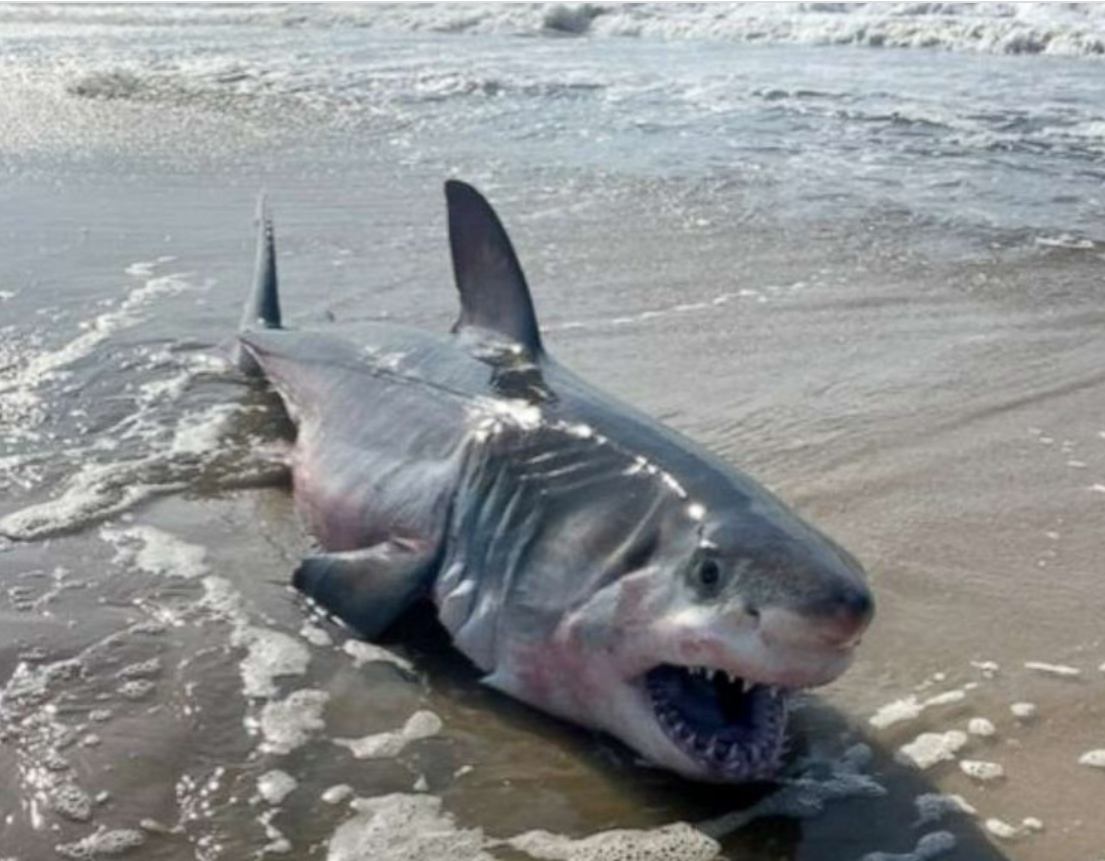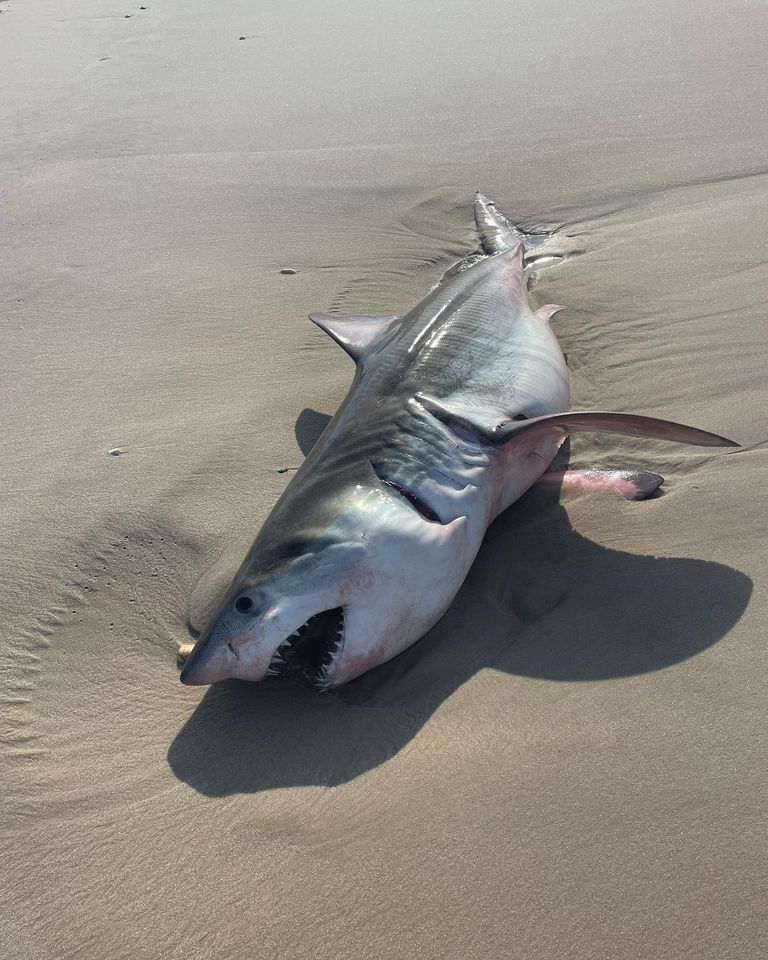Eight-foot-long shark washes up on Long Island beach in latest New York shark sighting
The shark washed back into the ocean before police could secure it, according to officials
Your support helps us to tell the story
From reproductive rights to climate change to Big Tech, The Independent is on the ground when the story is developing. Whether it's investigating the financials of Elon Musk's pro-Trump PAC or producing our latest documentary, 'The A Word', which shines a light on the American women fighting for reproductive rights, we know how important it is to parse out the facts from the messaging.
At such a critical moment in US history, we need reporters on the ground. Your donation allows us to keep sending journalists to speak to both sides of the story.
The Independent is trusted by Americans across the entire political spectrum. And unlike many other quality news outlets, we choose not to lock Americans out of our reporting and analysis with paywalls. We believe quality journalism should be available to everyone, paid for by those who can afford it.
Your support makes all the difference.A massive dead shark washed up onto a Long Island beach this week, just days after New York state ordered enhanced patrols at Long Island State Park beaches in response to the uptick of sightings of the massive predators.
At approximately 9.33am on Wednesday, a resident of the area witnessed the shark, between seven and eight feet long, beached on the shoreline at Ocean Beaches along Dune Road in the Village of Quogue, located about 80 miles east of New York City.
The resident quickly snapped photographs of the large fish, but before officials could get to the beach to safely remove it, the shark was washed back into the ocean.
“The shark was subsequently washed back out to sea before the police could secure it,” the Quogue Village police said in a statement shared on their Facebook page.
“At this time we are cautioning swimmers and boaters in the area to be aware of this ongoing situation, and to keep distance to allow the Law Enforcement to monitor this event,” they added, emphasising that if the dead shark is spotted, that authorities should be contacted immediately.

In the picture, later reshared by the Quogue police department, a massive shark is seen lying prostrate on the beach with teeth bared and eyes staring blankly ahead.
Quogue police said they were coordinating their recovery efforts with the South Fork Natural History Museum Shark Research and Education Program, which it says is also monitoring the situation.
Because the massive creature was washed back to sea before experts could inspect the deceased animal, they were unable to declaratively say whether it was a great white, though the species is seeing a resurgence in recent years along the shores of Long Island.
Chris Paparo, a member of the South Fork Natural History Museum’s shark research team and manager of the Marine Sciences Center at Stony Brook Southampton, told NPR recently in an interview that the return of sharks, such as great whites, to any region, it’s an indication that there’s plenty of food resources below (read: fish).

“Sharks need a healthy environment. So if the waters around us are not healthy, it can’t support sharks,” Mr Paparo told the radio station earlier this month, emphasising that the conservation efforts of smaller fish that the larger ones prey on could be partially to blame for the uptick in shark sightings. “So seeing these sharks is really a sign that we’re doing some really good stuff.”
In recent years, the number of shark sightings off the shore of Long Island have increased, leading to beach closures and the occasional encounter between man and fish.
Over the course of the past two weeks, The Long Island Press placed the number of non-fatal shark attacks at Long Island beaches at five, with two instances of reported bites occurring within 11 hours of each other.
Early in the morning on Wednesday 13 July, a shark reportedly bit a surfer in the water at Smith Point County Park, and then at around 6pm that same day, a 49-year-old man from Arizona was bitten on the left wrist and buttock while wading in the water off Seaview Beach.
Though locally there’s been an increase in the number of sightings of sharks, unprovoked shark attacks around the world remain a rarity. Globally last year, there were 73 unprovoked attacks – defined as a human being getting bit whilst swimming in a shark’s natural habitat without provocation – and 39 provoked bites, according to the International Shark Attack File.
The likelihood of bites and encounters may seem low, but the recent sightings have even prompted the state government to spring into action.
Just days before the dead shark washed up on shore, New York Governor Kathy Hochul issued a directive to agencies, including the Office of Parks, Recreation and Historic Preservation, the State Police and the Department of Environmental Conservation, to enhance surveillance of the waters and shoreline from as many angles as conceivable.
The governor requested the addition of more drones and helicopters for monitoring the situation from above, while also requesting more foot and water patrols in affected areas on the ground.
As recently as Tuesday, beaches in the Rockaways were closed after beachgoers spotted sharks in the water. They reopened on Wednesday, and no one was reported hurt.




Join our commenting forum
Join thought-provoking conversations, follow other Independent readers and see their replies
Comments